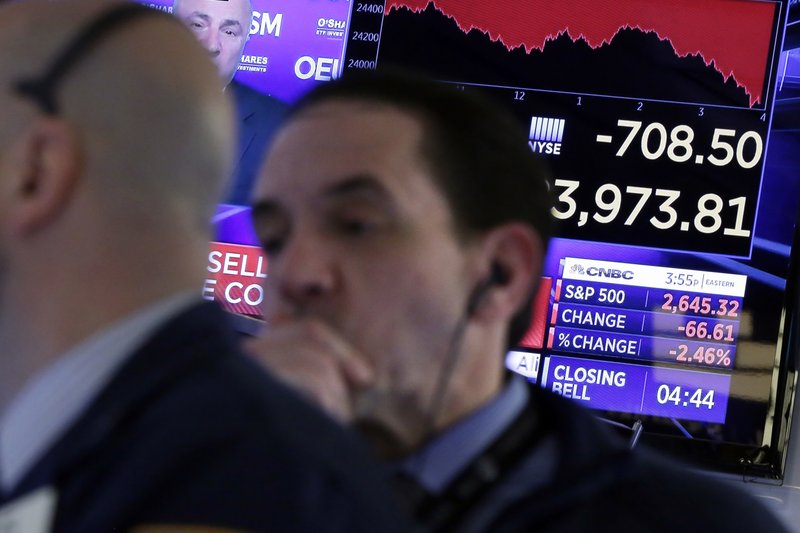NEW YORK -- After a years-long stretch when most mutual funds and exchange-traded funds powered higher quarter after quarter, investors are rediscovering the pain of volatility. The vast majority of funds are on track to close the first quarter with losses after a rocky few weeks wiped out what had been the stock market's best start to a year in decades.
Fewer than a quarter of all mutual funds have delivered positive returns this year, according to data from Morningstar. Last year 97 percent of all funds made money.
Worries about rising inflation and the possibility of a more aggressive Federal Reserve initially threw the market off its long ride higher in February. In March, fear that the world's biggest economies were headed for a damaging trade war did further damage to fund performance.
The largest mutual fund by assets lost 1.39 percent for the quarter as of Thursday, for example. It's the first quarterly loss for Vanguard's Total Stock Market Index fund in two and a half years.
What's made the market's recent troubles even more unsettling is that the parts of investors' portfolios that are supposed to be the safest have also been hit.
Bond funds have struggled, for example. The largest bond fund by assets, Vanguard's Total Bond Market Index fund, lost 2 percent in the quarter.
Bond funds are usually a comforting cushion for investors when stocks falter. Eight of the last 10 times that Vanguard's behemoth stock fund has turned in a quarterly loss, the Vanguard Total Bond Market Index fund has offered positive returns.
Here's a look at some of the trends that shaped the quarter for fund investors:
• Tech stock funds were some of the best performers.
It may be surprising given how much they've slid in the past couple of weeks, but funds that focus on technology stocks and other fast-growing companies had some of the healthiest returns.
That's because they raced out to such big gains early in the year that they were able to absorb recent losses. Investors have been pouring into technology stocks for years in search of companies able to grow their revenue and profits almost regardless of the global economy's strength.
The average fund focusing on large-cap growth stocks surged to a 7.5 percent return in January alone, for example. But as the quarter drew to a close, Facebook had its worst week in nearly six years on worries that a scandal about its privacy policies could scare away users and hurt its profits.
• Many bond funds lost money.
Nearly three quarters of all taxable bond funds were down for the quarter.
Bond funds were hurt by some of the same worries that hit stocks in early February: that inflation is on the rise and the Federal Reserve may get more aggressive about raising interest rates to compensate.
Inflation is one of the biggest enemies for bond holders because it erodes the value of the fixed payments that bonds make: A $1 interest payment buys much less when inflation is spiking higher.
And when interest rates are rising, prices fall for the bonds that are sitting in bond funds' portfolios because they suddenly look less attractive than newly issued bonds. The yield on the 10-year Treasury hit 1.56 percent on Thursday, down from 2.41 percent at the start of the quarter.
Even though interest rates are expected to keep climbing, many analysts say bonds can still be considered the safe part of an investor's portfolio. Particularly if a trade war does break out, investors may be grateful to hold bonds, which have historically been much steadier than stocks.
"In times of crisis, people always go to Treasuries," said Stephen Janachowski, CEO at Brouwer & Janachowski, a financial advisory firm that manages $1.4 billion in assets.
• "Safer" stock funds also fell.
The rise in interest rates during the quarter made newly issued bonds more attractive to investors looking for income, and that sapped demand for stocks that pay big dividends.
Business on 03/30/2018
